by Marcel Ludikar

In 1938 the Czechoslovak Army Air Force was one of the most modern Air Forces of Europe, determined to fight in the threatened conflict for the freedom and integrity of its country. However, the morale of its personnel sank from the highest peak to the deepest depression when, by the Munich agreement, the great powers, Great Britain, France, Germany and Italy crippled Czechoslovakia and rendered it defenceless. Six months later, on l5tn March 1939, the remainder of the country was occupied by Hitler’s forces without a shot being fired.
On the last day of March the former Czechoslovak airmen left their stations and airfields for the last time to disperse to their homes. On one of the fighter stations, Major Alexander Hess bid his airmen farewell ending “… and I trust, as I know you and see you here in front of me, that we shall all meet again soon to fight our enemy as we have sworn on oath. I believe that we, airmen, have not yet lost our hope.” Many unit commanders spoke to their airmen in similar terms.

A few months later the first Czechoslovak airmen were crossing the borders into Poland, the next target for Hitler’s expansion. Soon there were a few hundred soldiers and airmen assembled in a camp for Czechoslovak refugees. They and many young men of military age, who came out of Czechoslovakia in order to fight the Germans, considered themselves from the beginning as military personnel and accepted the military organisation and command of senior Czechoslovak officers. Simply, they considered this a continuation of the Czechoslovak Army before its dissolution by the occupying German forces . As before the occupation, the Czechoslovak forces were apolitical but permeated with patriotism, sager to fight for the renewal of an independent Czechoslovakia. As before the occupation, the forces accspted the existing political leadership of the last president of free Czechoslovakia and other political leaders, and what was left of the Czechoslovak administration, i.e. the legations of the Republic (nowadays known as Embassies) which remained in France, Great Britain, Poland and the United States, who refused to recognise the German occupation of the country.
After Stalin and Hitler signed their non-agression pact, the Czechoslovak legation in Moscow was closed. The USSR recognised the so called Slovak Free State and the Czechoslovak ambassador had to hand over the Embassy and leave.
In the meantime the Czechoslovak Ambassador in France negotiated with the French government to transfer Czechoslovak soldiers from Poland to France and their service in the French Foreign Legion on condition that they would all be released from the Foreign Legion at the outbreak of war in order to form a Czechoslovak Army in exile. This had actually happened, the majority of Czechoslovak soldiers left Poland before the outbreak of the war and only those who arrived later remained in the camp under the command of Lt Col Svoboda, who later became General and finally President.
Except for a small number of airmen who were enrolled in the Polish Air Force, the rest of the military group withdrew before the advancing German armies eastward, split in two main sections. One managed to escape between the Russians and the Germans and reach Romania and eventually France. The other, under the command of Col Svoboda, fell into Russian captivity and its personnel remained POW’s until Hitler’s invasion of USSR in June 1941.
The Soviet government refused at first to allow them to leave the USSR but later permitted small parties, including airmen, to leave. Sir Stafford Crips, HM Ambassador in Moscow, reported to his government in this matter that there were financial difficulties as the Soviet government insisted on payment in US dollars only; (whether this was payment for their release or for their transport etc. is not disclosed in his message).
Meanwhile, in France after the outbreak of the war, the Czechoslovak ‘volunteers’ in the Foreign Legion were being formed. The airmen were however, sent to France squadrons and Air Force establishments pending the formation of Czechoslovak Air Force under an agreement between the French Government and the Czechoslovak National Committee dated 17th November 1939. Independent fighter, battle and bomber units were to be formed under the overall command of the French Air Force. Until the realisation of this agreement, Czechoslovak Air Force personnel were given at the disposal of the French Air Force authorities and the Czechs served in small groups in French squadrons. The establishment of Czechoslovak Air Force units was overtaken by events when the ‘real’ war started on 10th May 1939 and 110 Czechoslovak pilots in French units fought the Luftwaffe with outstanding success. They shot down 158 enemy aircraft, 19 were killed and 19 were injured . Six pilots serving with the French ‘battle’ formations took part in 70 operational sorties of a total 155 hours duration. Eight pilots serving with bomber units undertook 64 night operational flights of 255 hours duration. The remainder of the Czechoslovak Air Force personnel waited in the Czechoslovak Army depot at Agde, to be transferred to new Czech squadrons when Petain asked Hitler for an Armistice on 17th June 1940.
On the same day, 17th June 1940 at 11.50pm the following ‘Most Immediate’signal was sent by the Foreign Office to Sir R Campbell at Bordeaux: “Please pass the following message to General Ingr in command of the Czech Air Force (note: General Ingr was commanding the Czech Arrny in France) He is believed to be at Beziers. Message begins:
“Dr Beneš wishes you to instruct all Czech Air Force personnel to make for England as soon as possible. They should bring every single aeroplane possible. Pilots should fly to Andover where they are expected. They should avoid the defended areas of Southampton and Portsmouth. Those unable to come by aeroplane should proceed to port as advised by British Military Attache for evacuation ship. If possible, all stores that cannot be brought to England should be destroyed or rendered unserviceable. Ends.”
In view of the chaotic situation in France and the dispersal of Czech airmen not many, if any, received the above instructions, nevertheless it was clear to all that Britain was the natural sanctuary provided it was going to remain at war and willing to fight.
By the end of June the negotiations for the status of the Czechoslovak Forces in Britain were well advanced. President Beneš in his memoranda gave the strength of the Air Force in France as:
| Czechoslovak Air Force Personnel: | |
| Fighter pilots | 208 |
| Bomber pilots | 90 |
| Army co-op pilots | 45 |
| Observers | 73 |
| Gunners and Wireless Operators | 27 |
| Mechanics/inc fitters and other ground personnel |
281 |
| Total | 724 (of which 175 are officers) |
The pressure of events of the summer of 1939 and the eagerness of both the Provisional Czechoslovak Government and the individual airmen to participate in the critical stages of the war disposed of a formal treaty between the British and Czech governments about the status and use of Czechoslovak Forces before their engagement in the war effort. All Czechoslovak airmen were enrolled in the Royal Air Force Volunteer Reserve, officers commissioned in the rank of Pilot Officer’and higher acting rank to fill established posts. The first Czechoslovak Fighter Squadron was formed at Duxford as early as 12 July 1940 and the second Fighter Squadron No 312 on 12 September 1940. No 311 Czechoslovak Bomber Squadron was formed at Honington on 29 July 1940. The third Fighter Squadron No 313 was formed on 27th July 1941 Pilots surplus to the establishment of the first three squadrons numbering about 100 were allocated to various RAF squadrons. A considerable number of volunteers from the Czechoslovak Army (ground forces) begun to be transferred to the Air Force, both as trainee aircrew and ground staff, as it was the Air Force that was to bear the brunt of fighting – and losses – in the foreseeable future.


AVM Karel Janoušek
The official Agreement between the Government of the United Kingdom and the Provisional Czechoslovak Government, signed on 25 October 1940, confirmed the employment of the Czechoslovak Air Force with Royal Air Force, the personnel being members of both the RAFVR and the Czechoslovak Forces, subject to the laws of both countries and disciplinary regulations of both forces. Any cost of maintaining the Czechoslovak Government came from credits granted by HM government. What mattered most to the Czechoslovak airmen was that the Czechoslovak flag was to fly, together with the RAF ensign, on all stations where a Czechoslovak Air Force in the RAF was established. The Czechoslovak Inspectorate was to be based in London, responsible to both the Air Ministry and the Czech Ministry of National Defence. General Air Commodore (late AVM and Air Marshal) Karel Janoušek was appointed Inspector. Operational control was vested in Royal Air Force operational Commands.
The three Czech Fighter Squadrons, 310, 312 and 313, first operating independently, then from lst May 1942 as a Wing, completed 28,335 operational flights of a total of 461,905 hours were credited with 68⅙ shot down enemy aircraft, 37 probable and 59.6 damaged and 4 V1’s destroyed. A Czechoslovak Flight of No 68 Squadron of Night Fighters flew 1,905 missions and was credited with 18½ enemy a/c destroyed, 5 probables, 7 damaged and 2 Vl’s shot down. Individual Czech pilots serving with other RAF squadrons were credited with 68 a/c destroyed, 14 probables and 45⅓ damaged. For operation “Overlord” the invasion of the continent of Europe starting with Normandy landing on 6th June 1944, the Czech Fighter Wing was allocated to the Tactical Air Force. The Wing maintained a maximum effort over enemy territory, flying 4 two hourly sorties on “D” day.The Wing moved to B-10 landing strip North of Caen three weeks after “D” day, to continue operations against the Germans.
Personnel for the Czechoslovak Bomber Squadron were at first assembled at RAF Cosford where they were sorted out according to their qualifications and their numbers were augmented by volunteers transferred from the Czech Army. They were then sent to RAF Honington for the formation of the Squadron, retraining and familiarisation with a new aircraft – the Wellington. The 311 Czechoslovak Bomber Squadron flew its first operation, a raid on the marshalling yards at Brussels, on 10th September 1940 from a satellite airfield of Honington, East Wretham where it remained until June 1942. During these two years in Bomber Command the Squadron flew 1,011 operational sorties over enemy territory of a total of 5,192 hours and dropped 1,218.375 kg of HE bombs and 52,925 kg of incendiary bombs*. Unfortunately the losses of life were considerable and, except for volunteers from the Czech Arrny and a few young men just finishing schooling in England, there were no areas from which to replace the losses. At the same time the situation especially that of Great Britain, became precarious by the mounting losses of shipping due to an increased activity of German U-boats. No 311 Squadron, together with othor British and allied squadrons, was transferred from Bomber to Coastal Command and allocated to No 19 group for anti-submarine and anti-shipping patrols in the Bay of Biscay.
After “D” Day and the clearing of French ports of the Germans, the Squadron was transferred to No 18 Group for the same task in the North Sea, patrolling the area from lceland to the Norwegian fiords and the Baltic Sea, where the Germans had their “U-Boat” training bases. During the Squadron’s allocation to Coastal Command it completed 2,102 operational flights of a total of 21,527 hours and was credited with 4 enemy a/c destroyed, 3 probables, attacked 35 U-Boats and 4 surface vessels.

Of the total of 511 Czechoslovak airmen who lost their lives in World War II in Poland, France and Great Britain, 273 were lost in 311 Czechoslovak Squadron. Of those 122 in Bomber Command, 126 in Coastal Command and 25 in operational training. Of 51 airmen taken POW, 34 were from 311 Squadron, amongst whom was F/Off A. Valenta, one of the 50 allied airmen shot on orders of Goering after the ‘Great Escape’.
Czechoslovak airmen also served and flew in other roles, mostly after completing or in between operations tours, e.g. in ‘Transport Command’and’Ferry Command’, Photo Reconnaissance, Air-Sea Rescue and last, but not least in No 138 ‘special Squadron’ dropping agents into enemy territory, including those into occupied Czechoslovakia.

Czechoslovak Airmen’s Memorial, Dejvice, Prague.
A group of 21 pilots released from the Royal Air Force left the UK on 2lst February 1944, under the command of Staff Captain S/Ldr F Fajtl, DFC to form the first Czechoslovak Air Force regiment in the USSR. This regiment fought in the Slovak uprising from primitive grass airfields and without the sophisticated aids to navigation and control they were used to in England. They fought bravely until the bitter end when the unit flew back behind Soviet lines with all serviceable machines. Those who could not be taken back joined the partisans in the mountains.
The end of the war found all the Czechoslovak Squadrons in readiness to move to their liberated country but a few days later Air Marshall Janoušek visited all Squadrons personally to explain that the move could not take place “for technical reasons”. Earlier in 1945 President Beneš and most members of the Czechoslovak Govemment in London left England for home via the USSR and a new government was formed in the Eastern part of Czechoslovakia liberated by the Soviet armies. This government included for the first time members of the Czechoslovak Communist Party.
Except for a quick visit to Prague by Air Marshal Janoušek, to discuss the return of the Czechoslovak Air Force, the first two aircraft allowed to return were two new Ansons required by the Czechoslovak Government for internal flights. The members of the two crews, all former members of 311 Squadron had strict orders to change their uniforms – the insignias, from the RAF to Czechoslovak – before embarking on the flight back to their home country on 10th June 1945, a whole month after the end of hostilities in Europe.
Crossing the Czech borders, both crews called Prague airfield on the known international frequency but no reply was received. Fortunately, the weather was clear and both landed safely to a traditional welcome of bread and salt after an absence of six years of war. The operator of the Prague MF/DF was in the welcoming crowd. He confirmed that the calls were heard clearly but stated that the Russians did not allow him to answer them. The crews brushed this incident aside as a minor one. They were happy to be home again but perhaps this was a foretaste of things to come.
Liberator aircraft of No 311 Squadron began ferrying personnel and stores of the Czechoslovak Government from London to Prague sometime in July, but Squadrons Nos 310, 311, 312 and 313 did not return home officially until August 1945.

311 Sqn return to Prague-Ruzýně on 18 August 1945.

Despite the fact that a triumphal march through Prague was arranged for the homecoming Air Force on a working Thursday afternoon, the inhabitants of Prague welcomed their airmen with real enthusiasm and love. It was clear however, that ‘Western’ Air Force was not a favourite of one part of the government of the new ‘People’s Democracy’. There was no animosity against the Russians amongst the airmen returning from England, on the contrary, the Russians were welcomed as liberators from the worst tyranny the Czechs and Slovaks had ever known. Many excesses of the Red Army were overlooked because of the feeling of gratitude and sympathy for their enormous losses during the war. For several months the CPCz [Czechoslovak Communist Party] benefited from the admiration of the people for the Russian war effort. However, it soon became apparent that the official Soviet and CPCz crude propaganda was not only denying the war effort of the other allies including that of the Czechoslovak Forces in the West but was gradually turning against them.


Nevertheless, for two and a half years following the war Czechoslovakia remained a multi-party limited democracy and the former RAF members and Army personnel from ‘the West’ were treated well. The war-time airmen were, after all, the only available specialists with up-to-date experience in flying and able to train new personnel. Those who were not demobilised and remained in the service were also eager to see their country and its forces back amongst the most modern and efficient in existence. It was, therefore fully accepted that they were dispersed and allocated to Military schools, Staff Colleges and units which could not function without their expertise. It was not in the regular airmen’s nature to question the absence of their war-time leaders in the posts of real power and command. Their war-time commander, Air Marshal, now again, General K Janoušek, KCB became the Inspector of the Air Force, a post not in the chain of command.
By a general agreement between the permitted political parties, the Ministry of National Defence was to be in the hands of an officer of no-party allegiance and that was officially General Sovoboda who returned to Czechoslovakia at the head of the Czechoslovak Forces from the USSR. However two very important new branches were created in the Czech forces and these were the ‘Enlightenment Branch’ and ‘Defensive Security Branch’ both almost entirely manned by known members of the CPCz. The ‘Enlightenment Branch’ was not an Education Branch as known to the former RAF members, but very thinly disguised Agitprop – or political commisars, as they were known in the Red Army. The other branch was much more sinister but, to their later regret, not taken very seriously by former members of the Air Force and Army who had not come across anything of that kind in their services either at home, or in the West during the war.
Those officers, NCO’s and airmen who did not spend the war abroad but had survived it under the Nazi occupation, some in concentration camps, were much more careful in expressing their views than their ex-RAF colleagues, However, nothing happened to anyone who argued with the ‘Enlightenment’ officer during a daily political education period. That is, not until February 1948, when General Svoboda joined the Communist party.
The Communist takeover of power in the coup of February 1948 was immediately followed by a direct assault on former members of the Czechoslovak wartime forces, first the ex-RAF, then the members of the Czechoslovak army in the West, as they were considered to have been influenced far too much by their surroundings and experiences during the war, and finally non-Communist members of the Czechoslovaks from the USSR who had seen too much during their service there. Within days of the coup, scores of officers and NCOs were dismissed as politically unreliable, either because of their known anti-communist views or because they were married to English girls.
Many of these started fleeing the country when they saw the writing on the wall. Some fled on foot across the borders to Germany, unfortunately were caught and jailed. Others left some with their families, in ‘borrowed’ aircraft and landed in Germany, Belgium, France and some made it directly to England. To the Czechs Great Britain was a natural refuge, not only because of the recent common fight against Germans but also primarily, because its ideals of democracy and humane approach to all problems were the same for which they themselves had fought and for which many had given their lives. Of those airmen who came to Britain, and there were several hundred, many were accepted back into the Royal Air Force. Others dispersed all over the world with the result that the ‘Free Czechoslovak Airforce Association Abroad’ had members not only in Europe but also in the USA, Australia, Brazil and South Africa.
Those who for various reasons did not or couldn’t go into exile for the second time paid dearly for their wartime past. They were considered unreliable, a threat to the revolution, many were arrested, sent to prison, to labour camps (mainly into mines) or so called rehabilitation centres. Even Colonel Fajtl, the Commander of the Czechoslovak fighter regiment in the USSR and other members of his unit were incarcerated in the ’50’s. In these years of terror and darkness, monster trials took place in which many officers were sentenced to death or life imprisonment. Among them General H Pika and Air Marshal Janoušek, the former was executed, the latter’s sentence was commuted to life of which he served 13 years.
Even though this bloody era eased off after a few years, no former member of the Czechoslovak Air Force was allowed to obtain employment in any other capacity than as a manual worker on the lowest pay. The authorities made their lives as difficult as they could. The veterans were not allowed to meet their wartime comrades. It happened, for instance, that the restaurant where they had arranged to meet closed at the last minute ‘due to an extra holiday for the staff’. And so they would meet at funerals or mainly on the occasions of the traditional commutation of the Battle of Britain at the British Embassy. Some of them would bring their old wartime uniforms in a suitcase, change on the premises and spend an hour or two in a surrounding where they were treated with respect and where their past was appreciated and not maligned.
Considering this iniquitous treatment of war heroes in their own country, it is quite unbelievable that Czechoslovakia was not ashamed to send her Ambassador annually with a wreath to the war memorial of Czechoslovak airmen in Brookwood in England, which they had the audacity to ‘adorn’with a red star and hammer and sickle.

Fortunately, these bad times are behind us. After the Velvet Revolution a reunion of Czechoslovak airmen was realised in England in 1990 and the following year airmen as well as soldiers from WW2 received ‘moral and political rehabilitation’ – a pity that many of them only in memoriam!
© Marcel Ludikar
Written in l988, updated in 2002
* Most statistics are taken from a Czech book “On the Western Front by Brod and Cejka who has access to documents of the Czechoslovak Air Force Inspectorate transferred from London to Prague in 1945. Messages, telegrams etc. were accessed from Public Records Office, Kew.

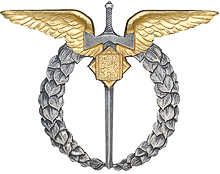


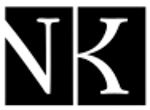

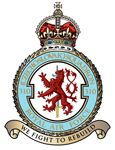
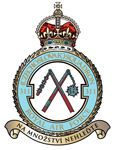
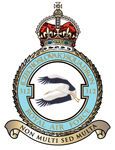
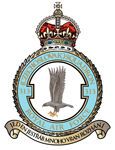


Searching history of Czech war “hero”, named Sadil. Any info please?
Now is exhibition with topic exhibit in Spitfire and Hurricane Memorial Museum in Ramsgate, Manston Road, till 10th September.